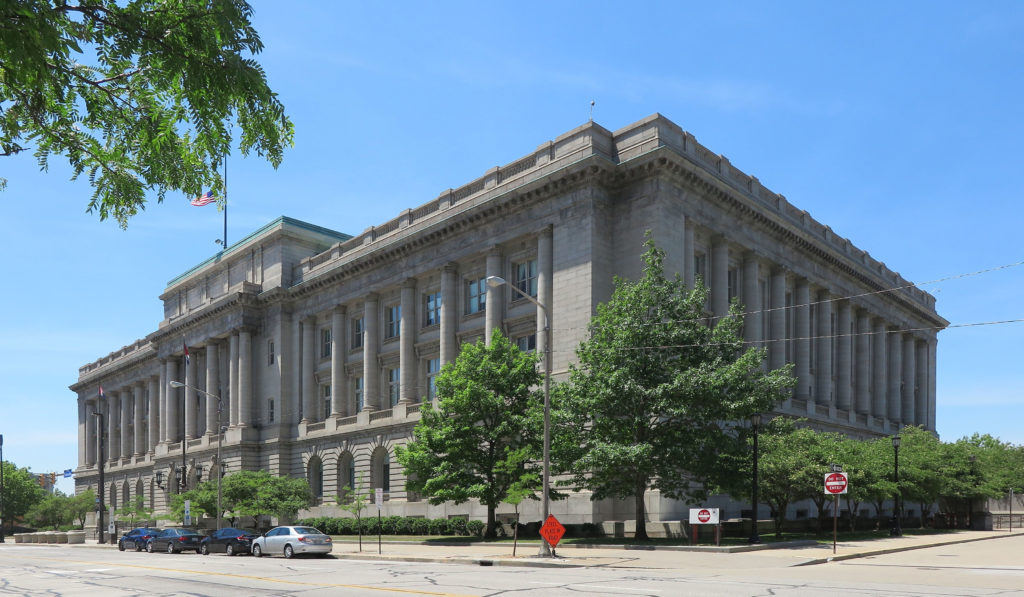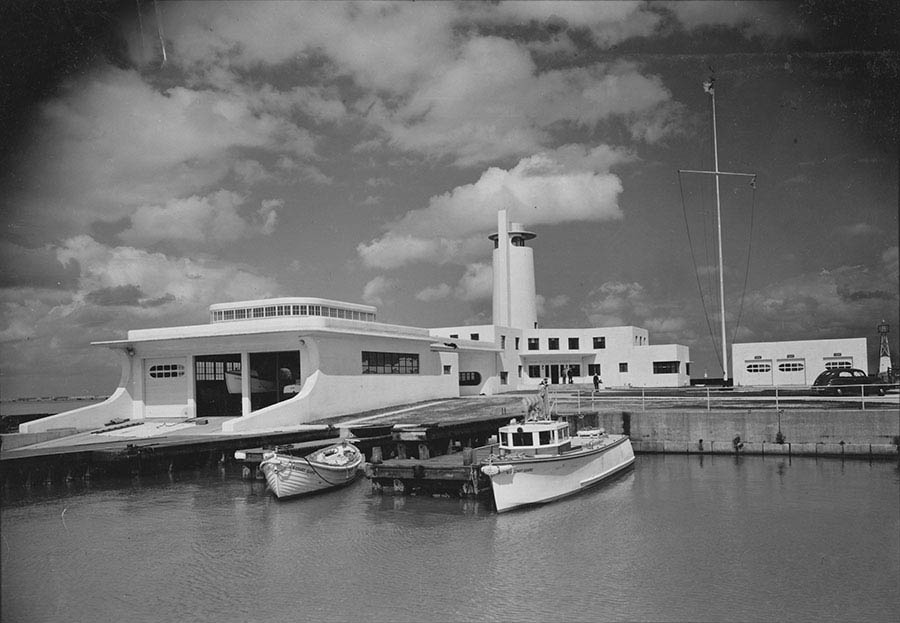J. Milton Dyer
(1870-1957), the architect of Cleveland’s City Hall. Born in Middletown, Pennsylvania, to Cyrus and Eliza Dyer, Dyer moved with his family to Cleveland in 1881. He graduated from Central High School, attended a local training school for machinists, and studied at the Cleveland Institute of Technology and L’ecole des Beaux Arts in Paris (1900). After returning to Cleveland from Europe, he had an active practice in the first two decades of the 1900s. Some of his major commissions were the Brooklyn Savings & Loan Association (1904) at West 25th Street and Archwood Avenue; the TAVERN CLUB (1905) at East 36th and Prospect Avenue; the First Methodist Church (1905) at Euclid Avenue and East 30th Street; the PEERLESS MOTOR CAR COMPANY (1906) at East 93rd Street and Quincy Avenue (now demolished); the CLEVELAND ATHLETIC CLUB (1911); and City Hall (1916). After a period of inactivity, Dyer designed the U.S. Coast Guard station (1940) on Whiskey Island at the mouth of the Cuyahoga River. Early residences designed by Dyer include one for Edmund Burke (1910) on Magnolia Drive in University Circle (now used by the Cleveland Music School) and the Lyman Treadway Mansion (1911) at East 89th and Euclid, since demolished).

Photo courtesy Bill Eberhard

Photo courtesy Bill Eberhard